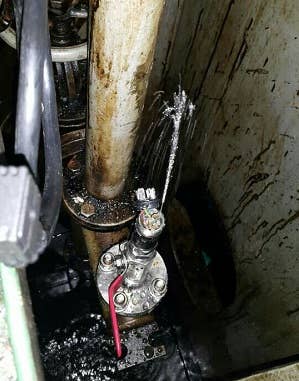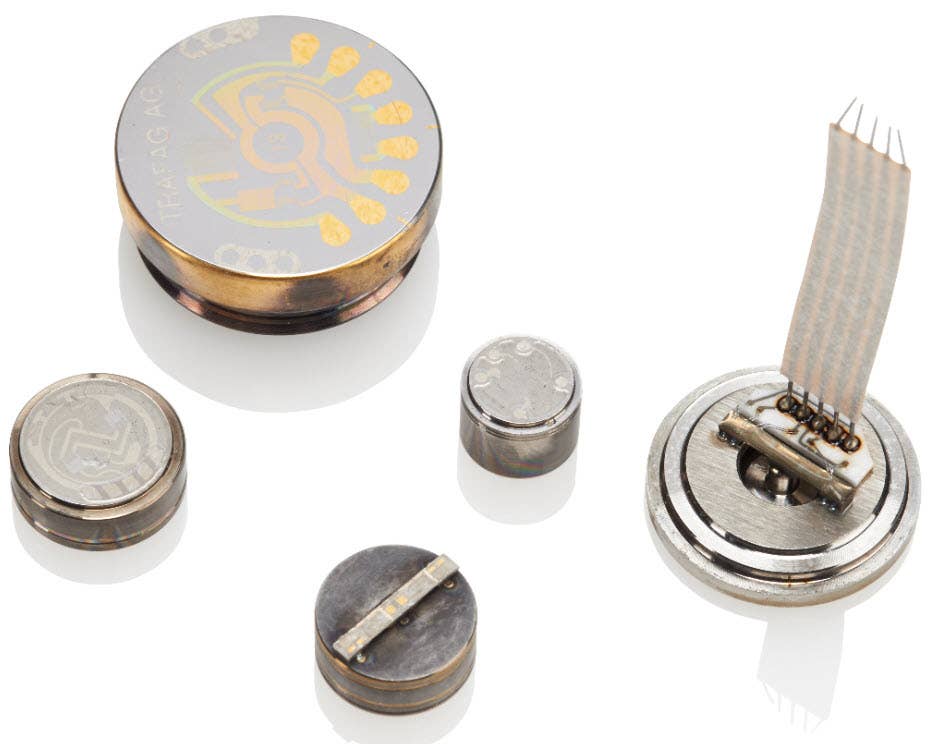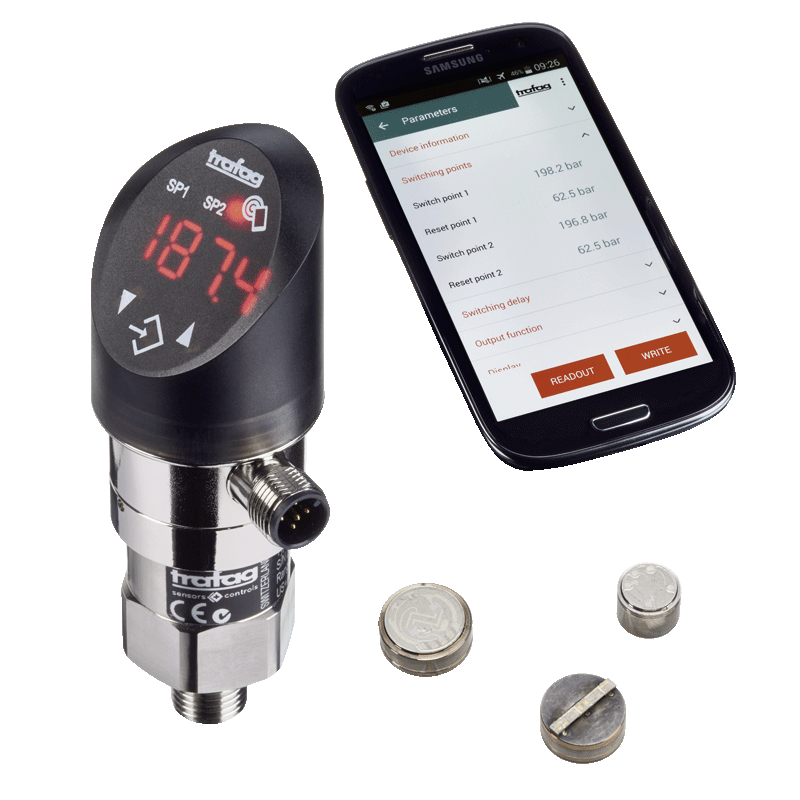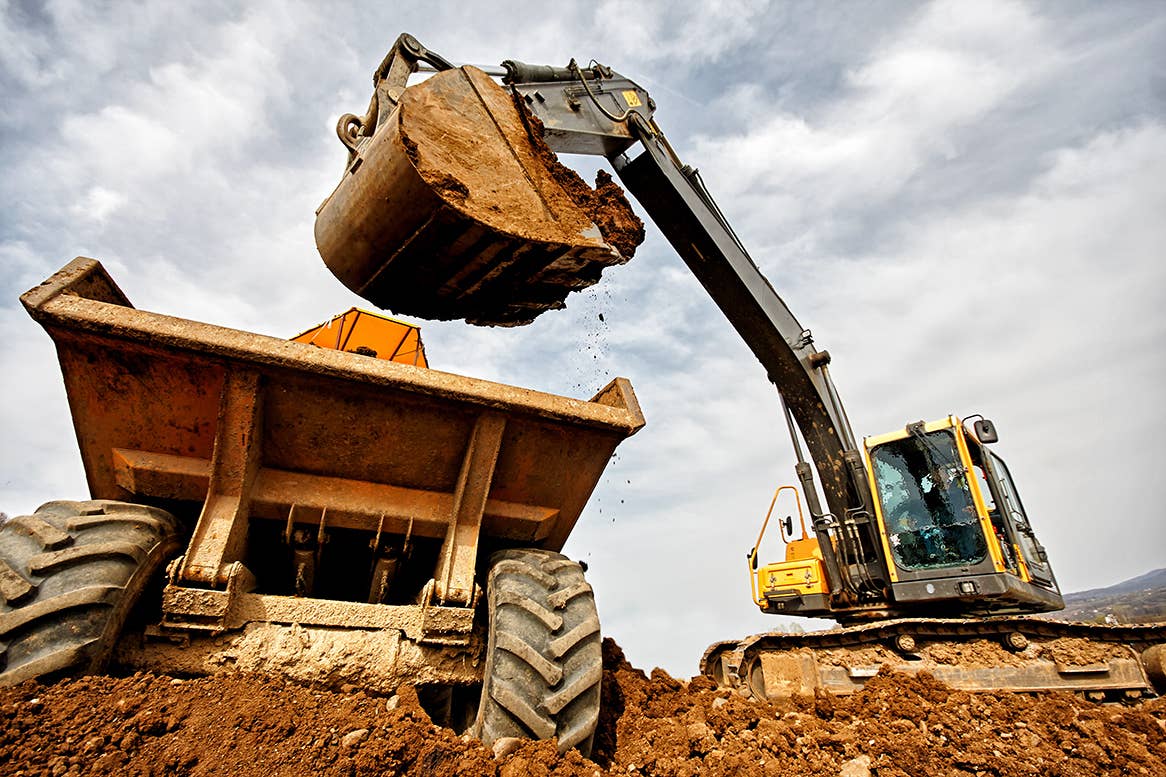Hydraulics
Trafag pressure transmitters are used in applications from heavy construction and agricultural equipment to high accuracy test benches. They are proven for long term stability in extremely harsh environments from the dusty heat of deserts to the icy cold of sub-arctic forests. The reliable pressure transmitters with great long-term stability are highly prized for stationary hydraulics as well, for they avoid costly production interruptions.
Trafag’s products are used in hydraulics, for example:
- Agricultural and forestry machines
Tractors, harvesting machines, transport machines - Renewable energies
Rotor control in wind power plants, solar tracking for photovoltaic systems - Construction machines
Excavators, mobile cranes, concrete pumps and mixers - Communal and special vehicles
Garbage collection, heavy transporters, firefighting vehicles - Machine and plant construction
Injection moulding machines, forming presses, stretch-blow machines - Test and inspection installations
Chassis test benches, material inspection systems, inspection of hydraulic components - Hydraulic components and subsystems
Valve block systems, power packs, tank monitoring
Reliable pressure measurement under harsh conditions
Pressure sensors for hydraulic applications - sometimes also called pressure transmitters or pressure transducers, (see also Pressure transmitters) measure the pressure of the medium hydraulic oil in valves, pumps, cylinders and pressure accumulators, etc.. They are therefore central elements for the control and regulation of hydraulic systems. These systems are often components of large and expensive machines or plants, where a standstill or even failure would have far-reaching consequences. For this reason, pressure transmitters for hydraulics must always function reliably - even under harsh conditions. Therefore, the robust design is very important.
Hydraulic applications are divided into two categories: The category of stationary hydraulics includes areas of application such as machine tools or lifts. The category of mobile hydraulics includes, for example, construction machinery and municipal vehicles.
Many requirements apply to both stationary and mobile applications. In mobile hydraulics, additional challenges must be mastered due to the harsh environmental conditions.
General challenges for pressure sensors in hydraulics
Pressure peaks
In hydraulic applications, a fluid pressure is generally measured, usually the pressure of the hydraulic oil. Because the fluid is only slightly compressible, pressure peaks caused by the system and the application are transmitted to the sensors almost unfiltered as hard shocks. This short-term, enormous pressure load can cause the sensors to be damaged or even burst. As a countermeasure, most manufacturers integrate so-called pressure peak damping elements in the pressure bore of the sensor. Because these have a smaller opening than the pressure bore in the part of the pressure transmitter that encounters the medium, they act like an orifice in front of the diaphragm and thus in many cases provide initial protection for the sensor against brief pressure surges.
In the case of extreme pressure surges, however, the damping elements are no longer sufficient, and the diaphragm must be built more robustly. The overpressure resistance, which is twice the measuring range or nominal range for commercially available pressure sensors, serves as the measured variable for the robustness of the diaphragm against pressure surges. Hydraulic pressure sensors from Trafag offer an overpressure resistance of three times the nominal pressure as standard, and an overpressure resistance of five times the nominal pressure is even available as an option.


Further information on the topic of "pressure peaks" and how pressure sensors can be protected against pressure peaks can be found here:
Significance of sensor selection for pressure measurement in hydraulics
Should pressure peaks occur that are significantly higher than the overpressure resistance, the use of thin-film-on-steel sensors as pressure transducers provides additional safety against bursting of the diaphragm. It is essential to prevent the diaphragm from bursting. Because a defective diaphragm would cause oil to leak out and the resulting damage would be far greater than a damaged pressure sensor.
The advantage of thin-film-on-steel sensors is the ductility of the pressure-bearing membrane. This is because it can still stretch under overload before it tears. This contrasts with thick-film-on-ceramic sensors and piezoresistive sensors, where the pressure-bearing elements are brittle and therefore exhibit abrupt fracture behaviour.
Another advantage of the thin-film-on-steel sensors is that possible damage can be detected relatively easily even before bursting. This is because overloading the diaphragm leads to a zero-point error, which can be detected very easily with suitable routines in the machine control.
Robust, overpressure-resistant measuring cells are a must in hydraulics
In addition to the pressure surges, which represent particularly high deviations from the nominal pressure, the nominal pressure in hydraulic systems is also higher than in pneumatics, for example. The working pressures in hydraulic systems are usually between 160 bar and 600 bar. Exceptions to this are the pressures in filters, where differential pressure is often measured, and in the levels in the liquid tanks, whose hydrostatic pressure ranges between 100 mbar and usually less than 2 bar.
The high pressure in hydraulic systems places high demands on the mechanical strength and precise manufacture of the components of the pressure transmitter: For example, the connection parts must be precisely manufactured to ensure the seal with the counterpart and to prevent oil from escaping. In addition, the stainless steel used for the connection must have the necessary strength to withstand the acting forces even after several years of use under harsh environmental conditions.
The connection parts and diaphragms of the pressure sensor are made of stainless steel and are very compatible with the common hydraulic oils. Only in the case of elastomer seals is it necessary to ensure that the sealing material used is also compatible with the contacting oil. This applies not only to the seals in the process connection, but also to the seals on the housing and in the plug. This is because escaping oil, resulting from leaks or contamination during repair and maintenance work, can cause external components to come into contact with the oil as well.


Meaning of the selected output signal for pressure measurement in hydraulics
The measured value is transmitted to the control via the output signal. Most in use are transmitters with the analogue output, such as 4 ... 20mA, because this is very cost-effective. However, digital signals, such as IO-Link or CANopen, are becoming more and more popular. They offer additional advantages besides the measured value evaluation. Because of their greater immunity to electromagnetic interference, digital signals offer the possibility of transmitting other parameters in addition to the measured pressure value, such as the device or media temperature (provided a temperature sensor in the transmitter makes the measured values available). In addition, digital signals can also transmit diagnostic data, which can be used for condition monitoring, for example.
Parameterisation is also very easy via the digital interface. It is of particular importance for pressure transmitters that have one or more switching outputs or for devices with a display. Trafag offers a pressure transmitter series (DPC 8380 and DPS 8381) with display. Various parameters can be configured easily and quickly via the smartphone app and the NFC interface on the display. In addition to the parameters for the switching outputs and the display, the measuring range can also be easily adjusted. In addition, the analogue output can be switched from a 4 ... 20 mA current signal to a 0 ... 10 VDC voltage signal. The data of the integrated logger can also be obtained via this interface.


Learn more about the parameterisation of pressure sensors with display in these whitepapers:
Electronic pressure switches without a display are increasingly being replaced by IO-Link devices. The switching outputs of the IO-Link devices, which are downward compatible with conventional pressure switches due to the IO-Link standard, can be parameterised very easily via the interface.
Special requirements for pressure sensors in mobile hydraulics
In mobile hydraulics, hydraulic systems are used in mobile machinery, such as construction machinery, forestry machinery, agricultural machinery, and mining machinery. These systems rely on pressure sensors to ensure safe and efficient operation. However, measuring pressure in these environments presents some additional challenges:
Extreme temperatures in mobile hydraulics
Applications in mobile hydraulics are often used in environments with extreme temperatures: e.g., in the desert or even in the Arctic. The large temperature fluctuations can cause a drift in the signals of the pressure sensors, which leads to inaccurate measurement results. The Trafag pressure transmitters of the NAX series (NAT 8252 and NAH 8254 with analogue output, NAI 8273 with IO-Link as well as CMP 8271 with CANopen output signal) have proven themselves for almost ten years under the toughest conditions in all parts of the world.
Shocks, impacts, blows and vibrations in mobile hydraulics
Mobile machines are used in harsh environments where significant shocks and vibrations are common This can lead to inappropriately selected pressure sensors providing inaccurate readings or even failing altogether. To reliably withstand vibrations, the internal structure of the pressure transmitters must be designed and produced to be correspondingly reliable. This is where Trafag pressure transmitters stand out with their reliable construction and connection techniques. Thanks to the high level of integration of many functionalities in the Trafag ASIC, the microchip developed in-house and ideally matched to the Trafag pressure sensor, the electronics of Trafag pressure transmitters require fewer components and are therefore more robust in the face of vibrations and therefore less prone to faults.


Contamination in mobile hydraulics
Mobile machines are often used in dirty and dusty environments, which leads to contamination of the pressure sensors. Contaminants, often just water or moisture, usually get inside the sensor through the connector - the main weak point of any pressure transmitter - and can damage the electronics or the measuring cell there. Therefore, a high and reliable protection class (IP 67 or even IP 69 / IP 69K) is crucial. Dust and corrosion caused by moisture condensation lead to sporadic false signals or even a permanently incorrect output value. The fully welded stainless steel housing as well as additional protective measures in the connector reliably protect the Trafag pressure transmitter from damaging environmental influences - even under the most adverse conditions.
Size and weight restrictions in mobile hydraulics
Mobile machines are designed to be as compact and light as possible. Therefore, pressure sensors should be small and light on the one hand, but still be able to withstand high pressures and harsh environments. The NAX series with a housing diameter of only 19mm is not only very compact and thus light. The NAX pressure transmitters are also very robust and resistant due to the fully welded steel housing.
In summary, pressure measurement in mobile hydraulics applications is very demanding due to the high-pressure ranges, extreme temperatures, shocks and vibrations, contamination and size and weight limitations of the machines, making the correct and considered choice of pressure sensors an important task. This is because pressure sensors must be able to reliably meet these challenges while providing accurate readings for safe and efficient machine operation.
Do you have any questions about the right choice of pressure transmitter?
Contact our Trafag sales specialists:
Results
36 Articles found
-
CANopen Miniature Pressure TransmitterCMP 8271
-
Industrial Pressure TransmitterNAT 8252
-
Pressure TransmitterNAH 8254
-
Pressure TransmitterNAH 8253
-
-
Industrial Pressure TransmitterEPI 8287
-
Industrial Pressure TransmitterECT 8472
-
Industrial Pressure TransmitterECT 8473
-
Engine Pressure TransmitterEPN/EPNCR 8298Approval / conformity: ABS, BV, CCS, DNV-GL, KRS, LRS, NKK, RINA, RMRS
-
Display Pressure SwitchDPC 8380
-
Display Pressure SwitchDPS 8381
-
Temperature switchDTP 8180








































